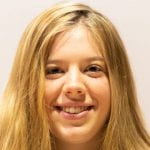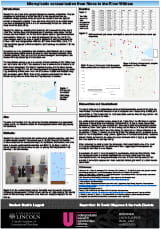by Sophie Leggott (UROS 2019 People’s Choice Winner) //
How would you feel if your home became a dumping ground for plastic waste?
With plastic pollution of Oceans on the rise the impacts on the marine environment are becoming more severe. Where does all the plastic come from? Plastics of any size are entering the Oceans either as identifiable objects or as microplastics (pieces of plastic which have a length of less than 5mm) which make their way into the foodchain for our consumption. With this in mind my project focused in on the Microplastic contamination within the River Witham which follows its course to the Wash and extends into the North Sea. No previous research completed within this area we were unsure what we would find.
Within this project I took a representative 13 samples from within the 26 collected from the source of the Witham in South Witham to the Wash. By doing so I could gain an overall picture of the microplastic contamination and whether it was flowing out into the North Sea adding to the Marine plastic pollution.
Within this project I also looked at shell counts, XRF data (to show different contaminations such as lead), and conductivity. From the data it was clear there was a strong correlation between the conductivity and total count of microplastics. There was also a very high level of lead detected at Bardney. By looking at the shell counts we potentially could identify a way that the microplastics are entering into the foodchain and thus being consumed by ourselves unknowingly.
Within the conclusions of this research I found there to be very high levels of microplastics within the Haven (5960 per Kilo of sediment). I also found there to be a strong correlation between the amount of shells and the amount of microplastics, as when inspecting under the microscope small pieces of shiny material fell out of them; thus showing a way that the microplastics are entering our foodchain.
This project has allowed me to further consider the potential of future research. From this study we would be able to branch out and analyse more samples within the Witham but then also move onto other catchments where analysis has not been completed yet. We could also find what was causing the very high lead reading at Bardney. This research could then be used within the realms of tackling the plastic pollution and to better understand where the majority of plastic is coming from.
Throughout this project I have developed in several ways. I have gained a greater understanding of academic research and fieldwork which are vital for future research that I may undertake. I have also been able to gain the experience of poster writing which will aid me further as I progress with my degree and future studies. The experience of working with my supervisors has been invaluable as seeing how they work to develop protocols and fieldwork campaigns has given me a real insight into what PhD research would be like.
*To view Sophie’s project poster, please click on the thumbnail below:

